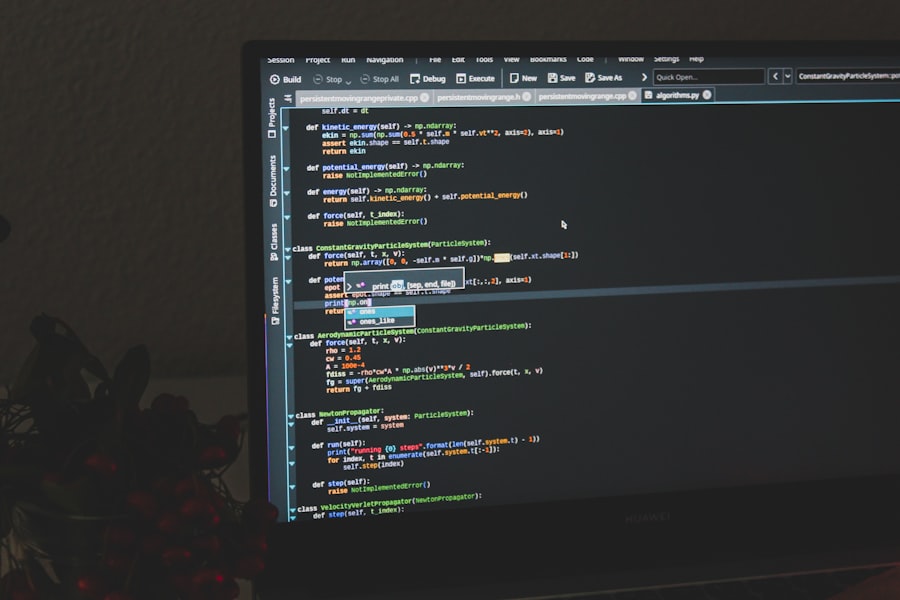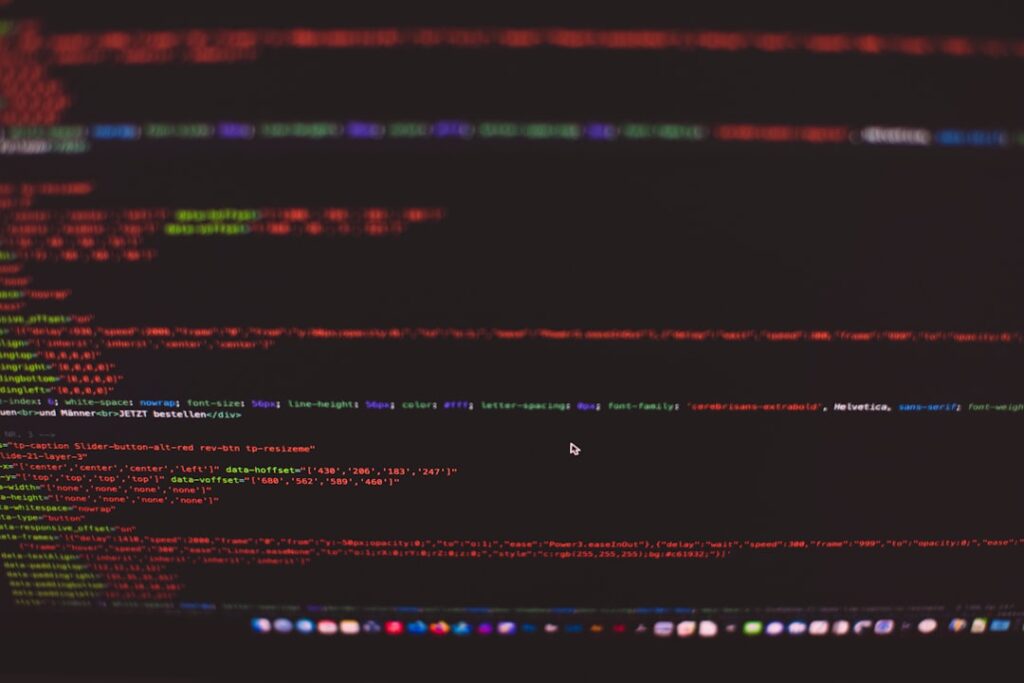As I delve into the world of JavaScript, one of the first concepts that captures my attention is the event loop. This fundamental mechanism is crucial for managing how JavaScript executes code, especially in a non-blocking manner. At its core, the event loop allows JavaScript to perform asynchronous operations while maintaining a single-threaded execution model.
This means that even though JavaScript runs in a single thread, it can handle multiple tasks efficiently without freezing the user interface or blocking other operations. The event loop operates by continuously checking the call stack and the callback queue. When I execute a piece of JavaScript code, it gets pushed onto the call stack, where it runs until completion.
However, when I encounter asynchronous operations, such as fetching data from an API or waiting for a timer, these tasks are offloaded to the browser’s Web APIs. Once these operations are complete, their callbacks are placed in the callback queue, waiting for the event loop to process them. This intricate dance between the call stack and the callback queue is what enables JavaScript to remain responsive and efficient, even when handling complex tasks.
Key Takeaways
- The JavaScript event loop is responsible for managing asynchronous operations and handling events in the browser environment.
- The call stack is a data structure that tracks the execution of functions in JavaScript, while the callback queue stores callback functions waiting to be executed.
- Asynchronous operations in JavaScript are managed using promises, which allow for non-blocking code execution.
- Microtasks and macrotasks play a crucial role in determining the order of execution for asynchronous operations in JavaScript.
- Understanding the mechanism of event loop execution is essential for writing efficient and responsive JavaScript applications.
Exploring the Call Stack and Callback Queue
To truly grasp how the event loop functions, I find it essential to explore the call stack and callback queue in greater detail. The call stack is a data structure that keeps track of function calls in my JavaScript program. Whenever I invoke a function, it gets added to the top of the stack, and when that function completes its execution, it is removed from the stack.
This Last In, First Out (LIFO) structure ensures that functions are executed in the order they are called. On the other hand, the callback queue serves as a holding area for messages or callbacks that are ready to be executed but cannot run until the call stack is empty. When I perform an asynchronous operation, such as making an HTTP request, the associated callback is placed in this queue once the operation completes.
The event loop continuously monitors both the call stack and the callback queue. If the call stack is empty, it will take the first callback from the queue and push it onto the call stack for execution. This separation of concerns allows JavaScript to handle multiple tasks without blocking the main thread, ensuring a smooth user experience.
Delving into Asynchronous Operations and Promises

As I continue my exploration of JavaScript’s event loop, I encounter asynchronous operations and promises, which play a pivotal role in modern web development. Asynchronous operations allow me to execute code without waiting for long-running tasks to complete. For instance, when I make an API call to retrieve data, I can continue executing other code while waiting for the response.
This non-blocking behavior is essential for creating responsive applications. Promises are a powerful abstraction that simplifies working with asynchronous operations. When I create a promise, I am essentially creating a placeholder for a value that may not be available yet but will be resolved in the future.
A promise can be in one of three states: pending, fulfilled, or rejected. When I use promises, I can chain `.then()` methods to handle successful outcomes and `.catch()` methods to manage errors gracefully. This approach not only makes my code cleaner but also enhances readability by avoiding deeply nested callbacks—a phenomenon often referred to as “callback hell.”
Examining the Role of Microtasks and Macrotasks
In my journey through JavaScript’s event loop, I discover that not all tasks are created equal; they can be categorized into microtasks and macrotasks. Understanding this distinction is crucial for managing task execution order effectively. Microtasks are typically associated with promises and are executed immediately after the currently executing script and before any macrotasks from the callback queue are processed.
This means that if I have multiple promises resolving in quick succession, their callbacks will be executed before any other tasks in the queue. Macrotasks, on the other hand, include events like setTimeout and setInterval callbacks, as well as I/O operations. These tasks are processed after all microtasks have been completed.
This hierarchy ensures that promise resolutions take precedence over other asynchronous operations, allowing me to handle critical updates or state changes promptly. By understanding this mechanism, I can better control how my application responds to various events and ensure that important updates occur in a timely manner.
Unraveling the Mechanism of Event Loop Execution
As I unravel the intricacies of event loop execution, I realize that it operates in a continuous cycle. The event loop begins by checking if there are any tasks in the call stack. If there are no tasks present, it then inspects the callback queue for any pending callbacks.
If it finds any, it will dequeue them one by one and push them onto the call stack for execution. This cycle repeats indefinitely as long as there are tasks to process. However, what fascinates me is how this mechanism allows JavaScript to remain responsive even during heavy workloads.
By prioritizing microtasks over macrotasks and ensuring that each task is executed in order, I can create applications that feel seamless and fluid to users. Understanding this execution flow empowers me to write more efficient code and anticipate how my application will behave under various conditions.
Handling Concurrency and Parallelism in JavaScript

While exploring concurrency and parallelism in JavaScript, I come to appreciate how these concepts differ yet complement each other within the context of the event loop. Concurrency refers to the ability of my application to handle multiple tasks at once without necessarily executing them simultaneously. In JavaScript’s single-threaded environment, this is achieved through asynchronous programming techniques like callbacks, promises, and async/await syntax.
Parallelism, on the other hand, involves executing multiple tasks simultaneously across different threads or processes. While JavaScript itself does not support true parallelism due to its single-threaded nature, I can leverage Web Workers to achieve this effect. Web Workers allow me to run scripts in background threads separate from the main execution thread, enabling me to perform heavy computations without blocking user interactions or UI updates.
By understanding how concurrency and parallelism work together in JavaScript, I can design applications that efficiently utilize resources while providing a smooth user experience. This knowledge empowers me to make informed decisions about when to use asynchronous techniques versus when to offload tasks to Web Workers for optimal performance.
Tackling Common Pitfalls and Best Practices
As I navigate through JavaScript’s event loop and asynchronous programming landscape, I encounter several common pitfalls that can lead to unexpected behavior or performance issues. One such pitfall is neglecting error handling in promises. When working with asynchronous code, it’s crucial for me to implement proper error handling using `.catch()` methods or try-catch blocks with async/await syntax.
Failing to do so can result in unhandled promise rejections that may crash my application or lead to silent failures. Another common issue arises from improper management of asynchronous operations within loops. If I’m not careful when using asynchronous functions inside loops, I may inadvertently create race conditions or execute callbacks in an unintended order.
To mitigate this risk, I often use techniques like `Promise.all()` or `for…of` loops with async/await syntax to ensure that my asynchronous operations execute sequentially or concurrently as intended. By being aware of these pitfalls and adhering to best practices—such as keeping my code modular, using descriptive variable names, and maintaining clear separation between synchronous and asynchronous logic—I can enhance both the reliability and maintainability of my JavaScript applications.
Implementing Efficient Event Loop Management in JavaScript Applications
In my quest for efficient event loop management within JavaScript applications, I’ve learned that careful planning and design can significantly impact performance and responsiveness. One effective strategy is to minimize blocking operations on the main thread by offloading heavy computations or long-running tasks to Web Workers whenever possible. This approach allows me to keep the user interface responsive while performing complex calculations or data processing in parallel.
Additionally, optimizing how I handle asynchronous operations can lead to smoother user experiences. For instance, instead of chaining multiple `.then()` calls on promises, I often use async/await syntax for better readability and maintainability. This not only makes my code easier to follow but also allows me to handle errors more gracefully with try-catch blocks.
Furthermore, monitoring performance using tools like Chrome DevTools helps me identify bottlenecks or areas where my application may be lagging due to inefficient event loop management. By profiling my application’s performance and making data-driven decisions about where optimizations are needed, I can ensure that my JavaScript applications remain fast and responsive even as they grow in complexity. In conclusion, understanding the intricacies of JavaScript’s event loop has been an enlightening journey for me as a developer.
By mastering concepts such as the call stack, callback queue, microtasks versus macrotasks, and effective concurrency management strategies, I’ve equipped myself with valuable tools for building robust applications that deliver exceptional user experiences. As I continue to refine my skills in this area, I’m excited about the possibilities that await me in crafting efficient and responsive web applications using JavaScript.
For those interested in expanding their understanding of JavaScript beyond the event loop, a related article that might pique your interest is available on the same platform. You can explore more about JavaScript and other programming topics by visiting the blog section of the website. This section offers a variety of articles that delve into different aspects of programming and technology. To read more insightful content, check out the blog on thesheryar.com.
FAQs
What is the JavaScript Event Loop?
The JavaScript Event Loop is a mechanism that allows JavaScript to handle asynchronous operations by managing the execution of code in a single-threaded environment.
How does the JavaScript Event Loop work?
The Event Loop continuously checks the call stack for any pending function calls. If the call stack is empty, it looks at the callback queue for any pending tasks and moves them to the call stack for execution.
What are the components of the JavaScript Event Loop?
The main components of the JavaScript Event Loop are the call stack, the callback queue, and the event loop itself. The call stack is where function calls are queued for execution, the callback queue holds tasks that are ready to be executed, and the event loop continuously checks for tasks to move from the callback queue to the call stack.
What is the role of the callback queue in the JavaScript Event Loop?
The callback queue holds tasks that are ready to be executed, such as asynchronous callbacks, and waits for the call stack to be empty before moving them for execution.
How does the JavaScript Event Loop handle asynchronous operations?
The JavaScript Event Loop allows asynchronous operations to be handled by queuing their callbacks in the callback queue and moving them to the call stack for execution when the call stack is empty. This allows the main thread to continue executing other tasks without being blocked by long-running asynchronous operations.
